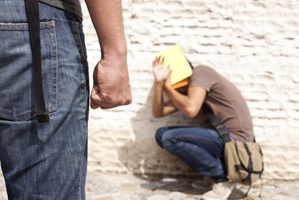Bullying can become a major issue for students if it is not addressed right away. When a child feels insecure or unsafe, meeting academic standards can be difficult. Bullying can affect anyone, from kindergarten all the way through high school. As a teacher, you need to be aware of student oppression and take action to stop any negative behavior. Preventative measure should also be used to maintain a safe and constructive learning environment.
1. Talk to students about bullying
Foster a sense of community in the classroom and encourage kids to discuss bullying. Education World suggests coming up with classroom rules that will help prevent bullying. For instance, a rule could be that if someone witnesses mean-spirited behavior against a classmate, they should share it with the instructor.
Another way to generate discussions about bullying is to integrate it into the curriculum. If the class is reading a fiction or nonfiction book that involves intimidation or tormenting, talk about actions various characters could take to minimize the behavior. Make sure you also point out why this conduct is unacceptable for the story and for the classroom.
2. Have a plan
Bullying is going to occur at some point in your class, so ensure you have a plan for handling the situation. If you don't handle the confrontation well, it could make the relationship between the students worse. The U.S. Department of Education advises instructors to separate the kids involved in the conflict and then speak to them each individually. This will allow you to listen to all sides of the story and determine what response is warranted.
3. Keep an eye on kids
Watch out for the kids you know are having problems with bullying at school or who you suspect are experiencing this issue. A lot of the time, kids are afraid to speak up about the troubles they are having, but it's your job as a teacher to create a safe environment. So, help these students by monitoring their interactions with other children and informing other teachers about your suspicions. This way, you're not the only one watching for harmful conduct. You should also pay extra attention to the areas in the playground and hallways where it is particularly easy for students to be alone. These are locations where students are most likely to experience bullying.
4. Take immediate action
Teachers need to take swift action when they witness bullying. By immediately reacting to this inappropriate behavior, instructors are telling kids their manners are unacceptable. Stepping in right away may also help stop future bullying from happening. Intervening in these situations also lets victims and witnesses know that you care about them personally and don't want to see them harmed.


